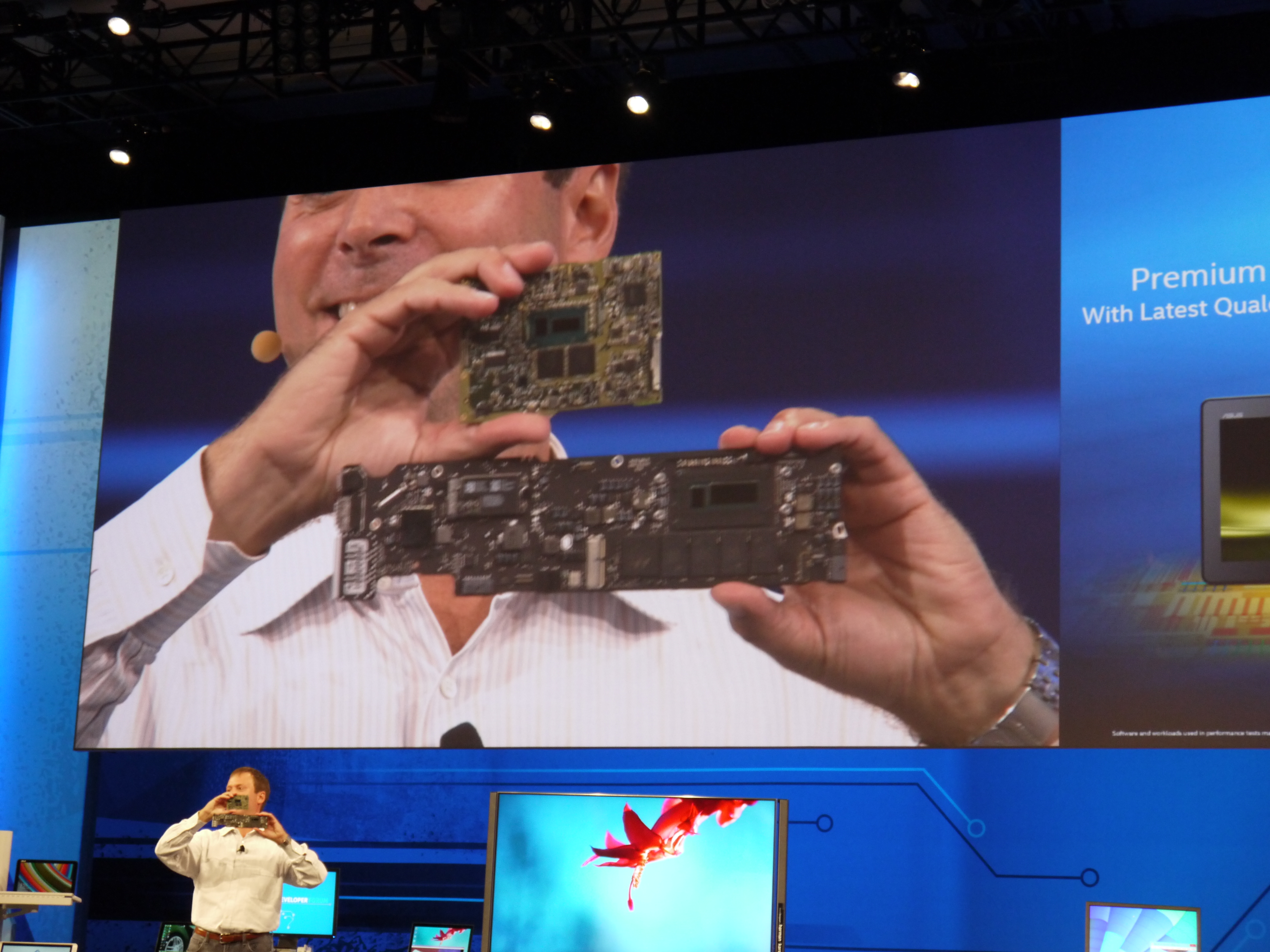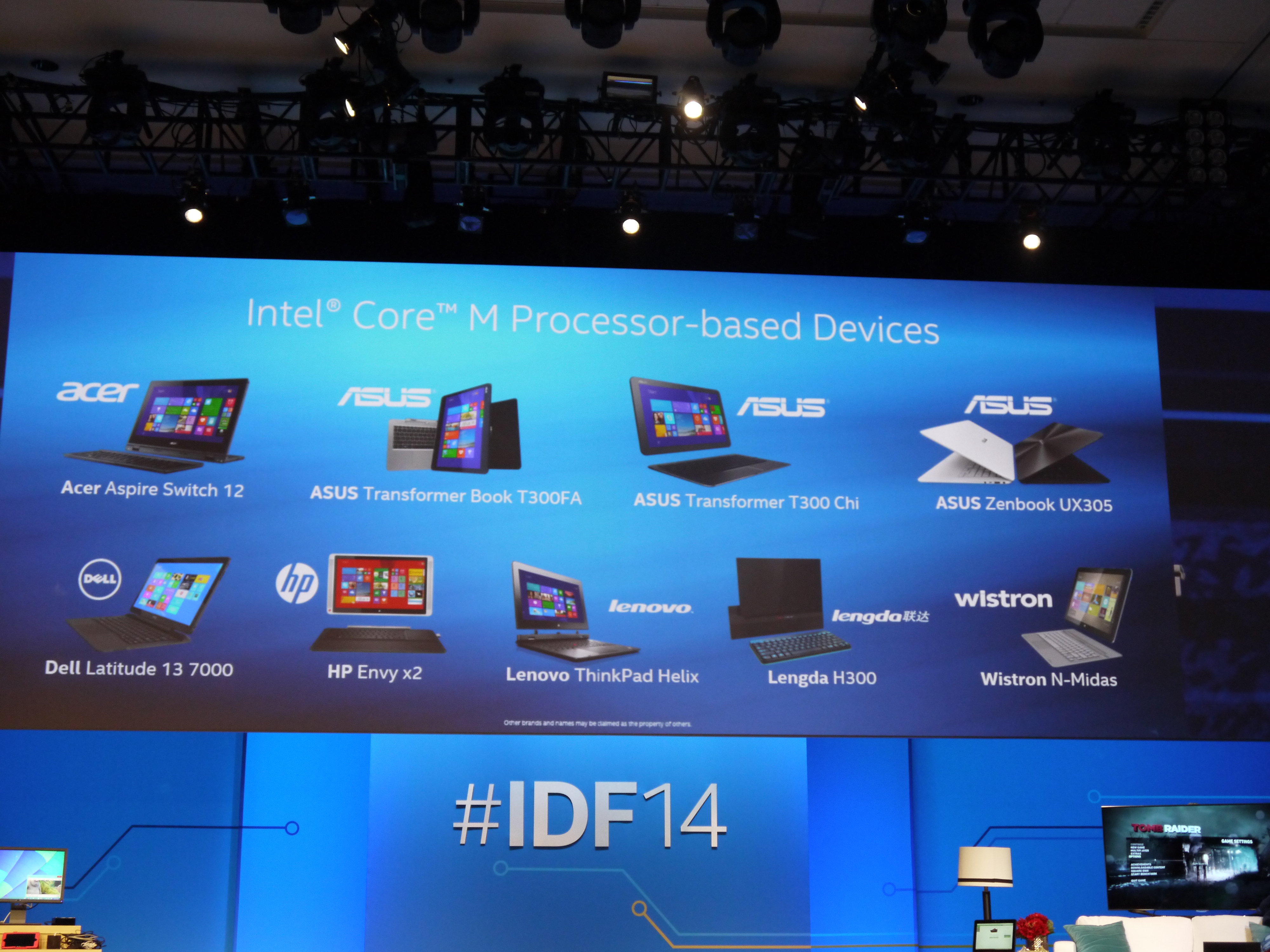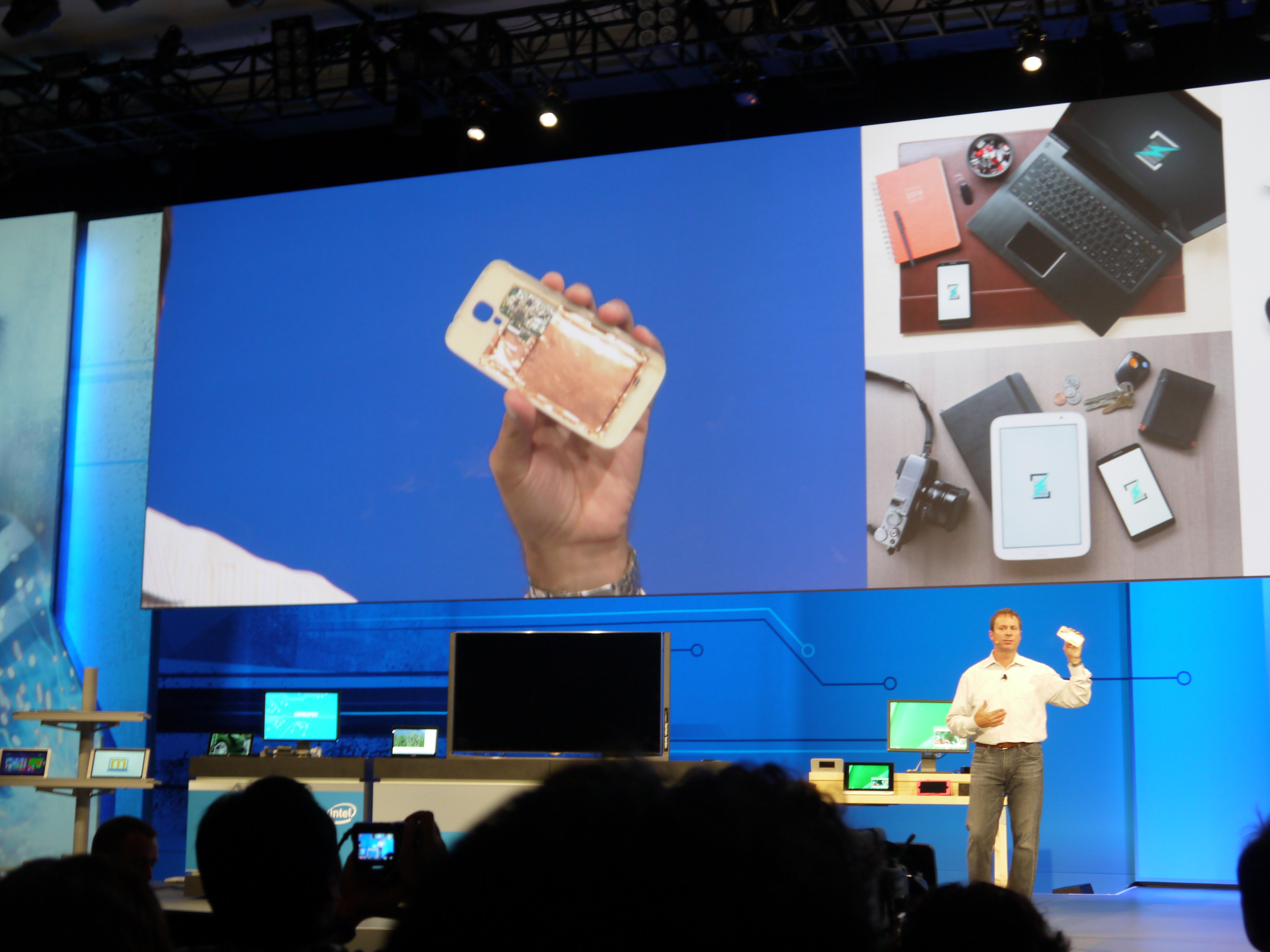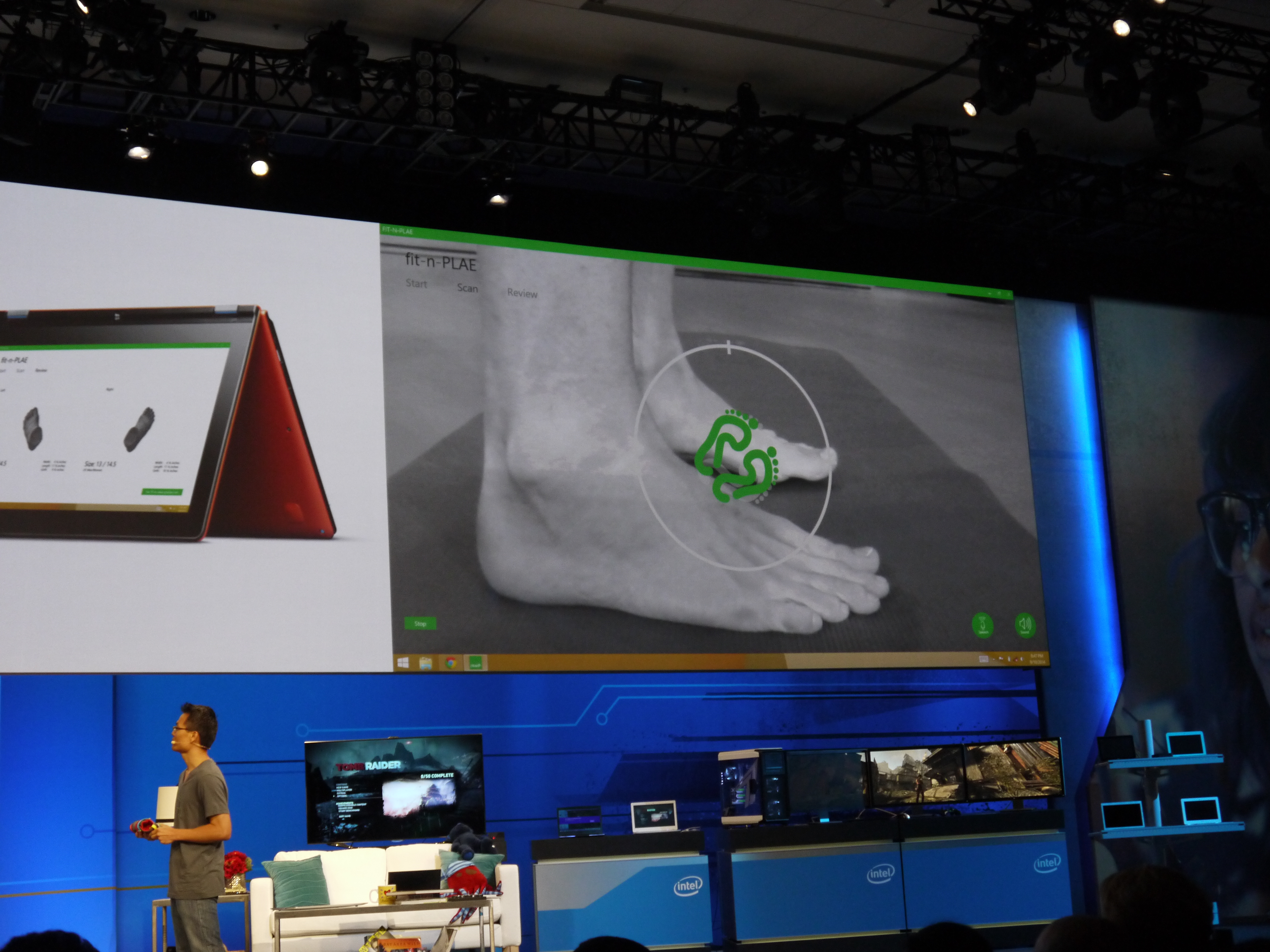IDF 2014 PC Mega Session: 2-in-1s to Rule Mobile, Wireless Everything Coming Soon
Intel's Kirk Skaugen took the stage at a "Mega Session" at IDF 2014 today to talk more about the many PC innovations that we heard about at the event's keynote address, and they include Core M processors; upcoming 2-in-1 devices; and some of the intriguing technologies therein such as wireless displays, wireless charging, biometric input controls that ostensibly eliminate passwords, and more.
Core M and 2-in-1s
More than anything, though, Intel is touting its Core M processor and the fleet of subsequent 2-in-1 devices from OEMs. We've been over the details of Core M already, so you already know that Intel says the Core M lineup will boast significantly better CPU and GPU performance and battery life (up to 20 hours on some SKUs), as well as fanless designs thanks to the incredible 4.5 Watt TDP.
And because Intel has cut the chip package in half, the Core M series will enable the creation of much more svelte devices, as well.
It's clear that Intel believes it has cracked the mobile nut, so to speak, with the Core M platform; Skaugen said that phones and tablets are primarily consumption devices (we'd agree wholeheartedly on the tablet side), laptops are fundamentally production devices, and there needs to be one device that serves both needs. (Stop us if you've heard that before.)
However, from the simple demos we've seen from the stage and on the show floor, Intel may be on to something with Core M-powered 2-in-1s. Saugen showed off several devices from partners, including the ASUS Chi, with its one-handed detach; the 13- and 15-inch HP Envy x2 that serves as almost a portable AIO when detached; the Acer Switch 12 with a unique kickstand that enables a variety of "modes"; the 9.7mm-thin Lenovo ThinkPad Helix business machine; and more.
They all look beautiful (at least from afar), and if Core M can deliver on its performance promises, we may just see that elusive balance of performance and size that is often missing from devices on the market.
If you thought that the aforementioned Lenovo ThinkPad was a business machine, you'd be right; Skaugen made sure to note that many Core M devices are equipped with vPro. Intel is also offering a $250 software bundle that includes Skype, Office 365, McAfee, and more.
Get Tom's Hardware's best news and in-depth reviews, straight to your inbox.
One large question mark that we're interested in is cost. Core M chips will run OEMs $281 each (in lots of 1,000), so these promising 2-in-1s will not be cheap. You can snag yourself a nice Chromebook or low-end Windows notebook for that, so we wonder whether the Core M-based 2-in-1 price points will be as compelling as the platform itself promises to be.
Skaugen said that we can expect such devices to be on store shelves as early as October.
No Wires, Please. Or Passwords
The other large thrust for Intel this year pertains to cutting wires--all wires, really, including for displays, docking, charging, and data transfer. The company is demoing new WiDi technology that supports MiraCast and will come on a tiny dongle that will cost around $40. The tech should be present in TVs and other devices, and we'll see them appear as early as next year.
Intel is targeting docks and data with WiGig technology (aimed primarily at businesses, actually) that will feature performance three times that of WiFi 802.11ac and will be out in the first half of 2015.
Developers can expect engineering kits for wireless charging in as little as two months. In Q1 2015, they'll see reference designs for 2-in-1 PCs that will have integrated LTE and all of this wireless technology (as well as RealSense cameras).
We'll also see accessories such as smartphone and tablet covers equipped with Rezence wireless charging capabilities in the first half of 2015.
Those are some grand schemes, but Intel has one perhaps even more substantial in the works for next year: the (supposed) elimination of passwords. The company is developing input methods that rely primarily on biometric input such as voice, facial recognition, palm vein, fingerprint and gesture capture to allow users' devices to "recognize" them. Thus, ostensibly you wouldn't have to fiddle with passwords for unlocking your PC, smartphone, and so on.
Really, though, these biometrics are backup security measures, and you'll be able to switch them off in favor of manual controls; think of them as authentication measures more than actual replacements for passwords, despite Intel's marketing lingo.
Getting a RealSense of Things
Finally, we were treated to some more information about Intel's RealSense cameras. Yes, cameras plural, as Intel has as least three types. The F200 camera is designed to reside on the front of devices such as AIOs and 2-in-1s and will be used for tasks such as facial recognition and gesture control.
For the back of devices, Intel has two different RealSense cameras, the R200 (real-time) and R100 (post-processing) cameras, which will be more for detachables and tablets.
To demonstrate, Intel brought onstage the CEO of a company called Volumental, which provides 3D scanning software for retailers. For example, you can use Volumental's software and a RealSense camera to do a very brief (mere seconds) 3D scan of your foot; once captured, you can use the data to choose the correctly-sized shoes to order online, to an accuracy of within 3 mm.
Intel has been fairly lean on details in general at this show, but we'll continue to dig and push and find out the good stuff as it's available.
Follow Seth Colaner @SethColaner. Follow us @tomshardware, on Facebook and on Google+.
Seth Colaner previously served as News Director at Tom's Hardware. He covered technology news, focusing on keyboards, virtual reality, and wearables.
-
InvalidError I think Intel needs a pricing sanity check on Core-M... even $200 would still seem like somewhat of a stretch to me for what basically amounts to an under-clocked i3.Reply -
hannibal The problem is that Intel does not need to sell these at lover price... They have Atoms for cheap products and these seems to be for "give you my money" type of users...Reply
More competition is needed... -
youssef 2010 RealSense sounds like a real breakthrough. Can't wait to see it in action.Reply
All in all, the future of tech sounds exciting as always -
Christopher1 2-in-1's will rule everything IF they get the price for a 2-in-1 with a touchscreen down to about 400 dollars with 4GB's of memory and a reasonably powerful processor (equivalent to a P8400 Core 2 Duo processor) in them.Reply -
hannibal There is a article about these... the price seems to be near 1000$ / tablet...Reply
http://www.tomshardware.com/news/intel-core-m-broadwell-benchmarks,27656.html
Cheap as a butter...






